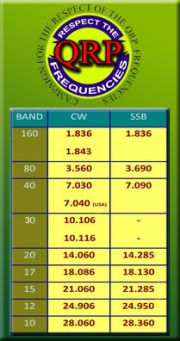Mobile Antennas
A website for mobile radio operators
 G3TSO Mobile Antenna Page
Some useful information for tuning mobile antennas gained the hard way!
G3TSO Mobile Antenna Page
Some useful information for tuning mobile antennas gained the hard way!

 CALCULATION OF HF WHIPS AND WIRE ANTENNAS DF8HL
WHIP is a small calculation program for HF whips and wire antennas on cars, shelters etc.
It shows complex impedances as well as capacity and inductance values for simple matching circuits that should be located directly at the feeding point.
Download
CALCULATION OF HF WHIPS AND WIRE ANTENNAS DF8HL
WHIP is a small calculation program for HF whips and wire antennas on cars, shelters etc.
It shows complex impedances as well as capacity and inductance values for simple matching circuits that should be located directly at the feeding point.
Download
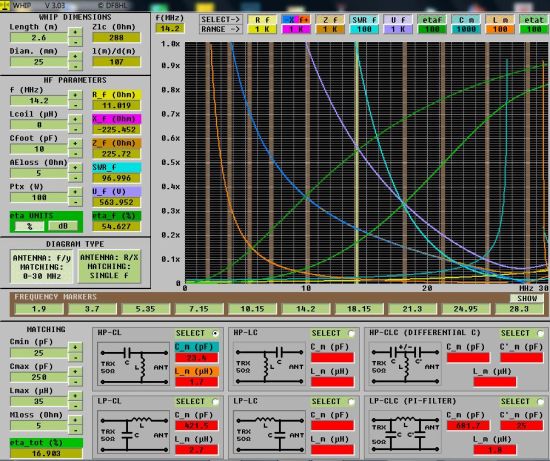 VK4ADC HF Helical Whip Calculator
VK4ADC HF Helical Whip Calculator
 Helicalwhips exe
Coil-Shortened Vertical Antenna Calculator
Helicalwhips exe
Coil-Shortened Vertical Antenna Calculator
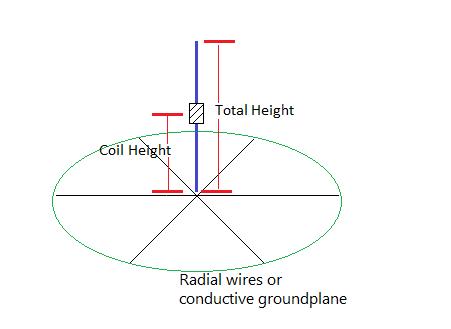 MULTI-RESONANT HF MOBILE ANTENNA
MULTI-RESONANT HF MOBILE ANTENNA
 Effective HF-antenna for mobile operation
Effective HF-antenna for mobile operation
 VE3SQB ANTENNA DESIGN PROGRAMS
VE3SQB ANTENNA DESIGN PROGRAMS
 Vertical exe
Helical Antenna Calculator
Vertical exe
Helical Antenna Calculator
 mobile_and_loaded_antenna
mobile_and_loaded_antenna
 G3YCC Mobile Whip
G3YCC Mobile Whip
 wb2vuo Effective Mobile Antennas
wb2vuo Effective Mobile Antennas
 Mobile and Maritime Antennas
Mobile and Maritime Antennas
 Magloop Antennas
Magnetic Loop Antenna W6SI
Magloop Antennas
Magnetic Loop Antenna W6SI
 Frank antenna magloop
This page provides a top-level description of Small Transmitting Loop (STL) antennas (a.k.a. "Magnetic Loop Antenna", MLA), and my two versions of such an antenna for 80 mtrs and up
Frank antenna magloop
This page provides a top-level description of Small Transmitting Loop (STL) antennas (a.k.a. "Magnetic Loop Antenna", MLA), and my two versions of such an antenna for 80 mtrs and up
 The Magloop Antenna Calculator by VK3CPU
Graphical small-loop antenna calculator that supports single and multi-turn loops made from Cu or Al tubing. Also supports circular, octagonal, hexagonal and square shaped loops.
The Magloop Antenna Calculator by VK3CPU
Graphical small-loop antenna calculator that supports single and multi-turn loops made from Cu or Al tubing. Also supports circular, octagonal, hexagonal and square shaped loops.
 Small Transmitting Loop Antenna Calculator
Small Transmitting Loop Antenna Calculator
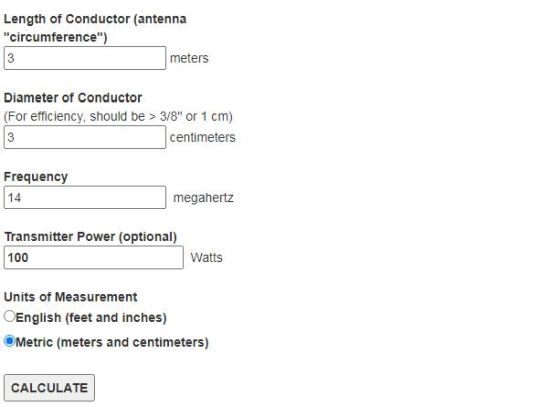 Small Transmitting Loop Antenna Calculator KI6GD
Small Transmitting Loop Antenna Calculator KI6GD
 Microvert Antenas
The Hairspray-can antenna DL7AHW
Microvert Antenas
The Hairspray-can antenna DL7AHW
 Construction of the can antenna
Construction of the can antenna
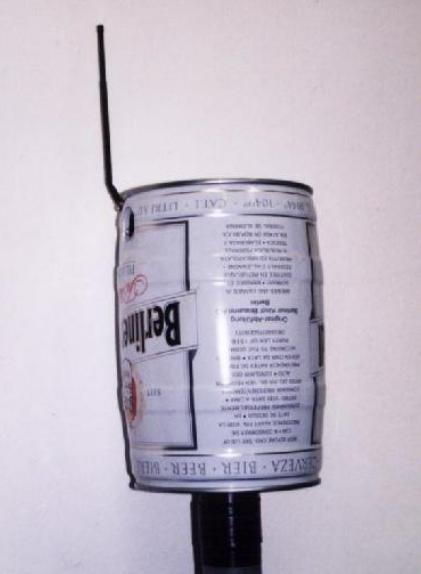 Microvert antenna calculator
Microvert antenna calculator
 Microvert antenna calculator
Microvert antenna calculator
 Minimob antenna DL2MHW
Minimob antenna DL2MHW
 Microvert book
Microvert book
 EH Antennas
UA1ACO EH antennas
EH Antennas
UA1ACO EH antennas
 A design program for eh ant by Ted Hard
A design program for eh ant by Ted Hard
 EH antenna calculator
EH antenna calculator
 Calculators
Coil 64
"Coil64" is a free coil inductor calculator, that allows calculating: single-layer and multilayer air core inductors, toroidal air core coil inductance, inductors on ferrite rings, in pot core, flat coils on the PCB, and also LC tank parameters
Calculators
Coil 64
"Coil64" is a free coil inductor calculator, that allows calculating: single-layer and multilayer air core inductors, toroidal air core coil inductance, inductors on ferrite rings, in pot core, flat coils on the PCB, and also LC tank parameters
 RF Inductance Calculator
RF Inductance Calculator for Single‑Layer Helical Round‑Wire Coils
RF Inductance Calculator
RF Inductance Calculator for Single‑Layer Helical Round‑Wire Coils
 Javascript® Electronic Notebook by Martin E. Meserve K7MEM
Javascript® Electronic Notebook by Martin E. Meserve K7MEM
 Helical Coil Calculator
Helical Coil Calculator
 Single-Layer Coil Inductance Calculator
Single-Layer Coil Inductance Calculator
 air core single layer inductor calculator
air core single layer inductor calculator
 Coax Trap
The Coax trap program computes design parameters for the construction of coaxial traps for HF usage. Typically these are constructed from PVC tube and RG58/59 coax
Coax Trap
The Coax trap program computes design parameters for the construction of coaxial traps for HF usage. Typically these are constructed from PVC tube and RG58/59 coax
 Coax Dipol Calculator
Coax Dipol Calculator
 VK4ADC LC Calculator
VK4ADC LC Calculator
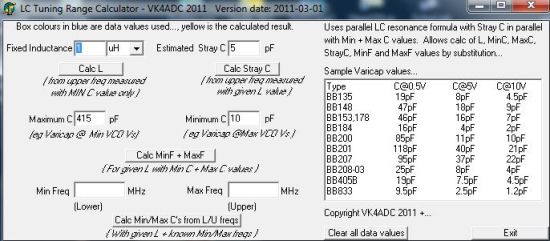 VK4ADC's WAVECALC
It allows a custom Velocity factor (Vf) to be used but displays the common ones for the selected frequency anyway. The yellow frequency box allows 1 MHz increments from 30 to 999 MHz to be selected quickly but any frequency can be entered textually into the MHZ box.
You can also calculate the Vf of an unknown coax cable by entering the actual length of the cable, the measured open circuit and short circuit notch frequencies.
VK4ADC's WAVECALC
It allows a custom Velocity factor (Vf) to be used but displays the common ones for the selected frequency anyway. The yellow frequency box allows 1 MHz increments from 30 to 999 MHz to be selected quickly but any frequency can be entered textually into the MHZ box.
You can also calculate the Vf of an unknown coax cable by entering the actual length of the cable, the measured open circuit and short circuit notch frequencies.
 Dipole Antenna Length
Dipole Antenna Length
 Online Calculators
Online calculators for designers, engineers, scientists, and the scientifically curious
Online Calculators
Online calculators for designers, engineers, scientists, and the scientifically curious
 Loaded-quarter-wave-antenna-inductance-calculator
Here is a formula and calculator for creating a loaded (shortened) quarter wave vertical or balanced dipole
Loaded-quarter-wave-antenna-inductance-calculator
Here is a formula and calculator for creating a loaded (shortened) quarter wave vertical or balanced dipole
 Smithchart
Computer Smith-Chart Tool and S-Parameter Plo
Smithchart
Computer Smith-Chart Tool and S-Parameter Plo
 Ham Radio Tools I4JHG
Ham Radio Tools I4JHG
 4nec2 - NEC based antenna modeler and optimizer
4nec2 - NEC based antenna modeler and optimizer



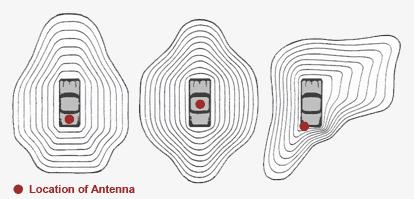



The four different ways to load a shortened mobile antenna. The first three are usually have stainless steel shafts whereas the last one is usually wrapped on a fiberglass rod. That is then covered with a plastic weatherproof covering.
The most efficient mobile antenna is a quarter wave whip.
Plenty of manufactures make a shortened antenna for our use. How do they do that? Simple, somewhere on the antenna (the base, center, top or entire antenna) they wind a coil to compensate for the length that they are shortening the antenna from a guarter wave.
When a coil is added to an antenna it does three things. One, it cuts down on the antenna's efficiency. Second, it cuts down on the bandwidth. Third it cuts down the antennas impedance (it lowers it even more than 40 Ohms). The shorter the antenna is made, the more these three factors are reduced.
There are differences in efficiency between the different methods of "loading" (placing a coil on the antenna to compensate for shortening it) a mobile antenna. The four types of loading are base, center, top and continuous loading.
If these antennas are all the same length (say 54 inches) the least efficient antenna is the base loaded whip. Its advantage is that you can make a heavy coil that will have a higher power handling capability than a center loaded or top loaded mobile antenna. A thicker coil handles more wattage, but you could not have a heavy coil in the middle of the antenna or top because the antenna would not be able to support it (it would be too "top heavy"). But still, it is the least efficient of all the shortened antenna types. For improved antenna efficiency, you could use the center or top loaded antenna. The center and top loaded antennas have about the same efficiency, so there really is no difference. You will mainly find only center loaded antenna however. Top loaded antennas are rare because they are more difficult to make strong enough to support the wind load. The most efficient of the shorten mobile antennas is the continuously loaded mobile antenna. It is usually a fiberglass rod wrapped up its whole length with a copper wire or flat ribbon. Use it when you must use a shortened antennas and want maximum performance. Use the longest possible for your vehicle. Its only disadvantage is it usually cannot handle high power (like over 500 watts) because it has to wrapped with a thin wire so its flexible and light.























































